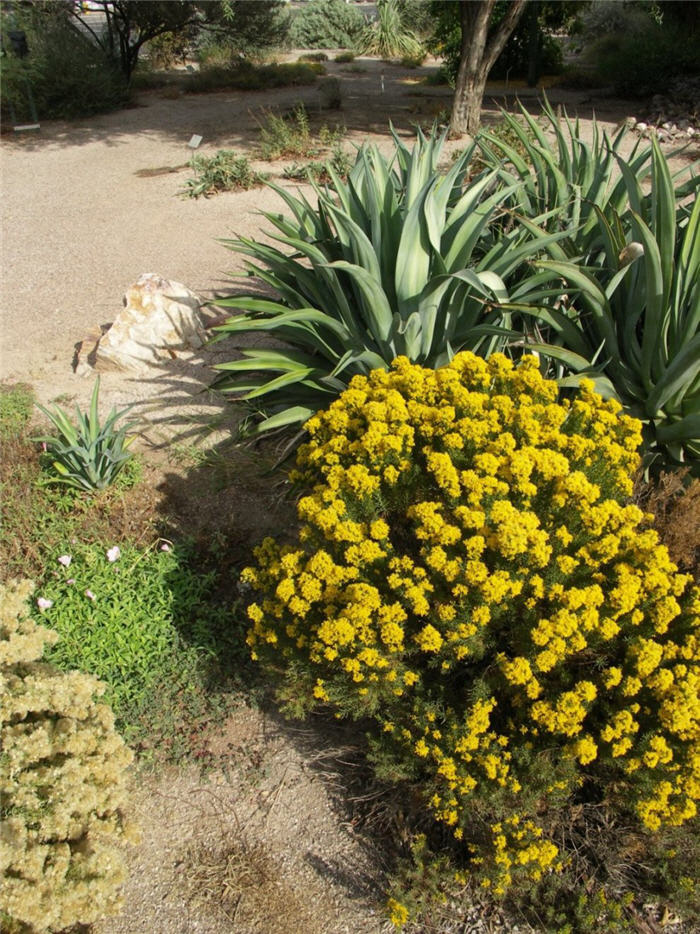| Botanical Name: Ericameria laricifolia | |
| Common Name: Turpentine Bush |

-
Anatomy
-
Culture
-
Design
Plant Type
Broadleaf Evergreen, Shrub
Height Range
1-3'
Flower Color
Yellow
Flower Season
Summer, Fall
Leaf Color
Green
Bark Color
Green, Grey
Fruit Color
White
Fruit Season
Fall, Persistent
Sun
Full
Water
Very Low, Low
Growth Rate
Slow
Soil Type
Sandy, Clay, Rocky
Soil Condition
Average, Poor, Well-drained, Dry
Soil pH
Neutral, Basic
Adverse Factors
Attracts Bees
Design Styles
Mediterranean, Ranch, Spanish
Accenting Features
Fragrance, Showy Flowers
Seasonal Interest
Winter, Summer, Fall
Location Uses
Perennial Border, Shrub Border, Foundation, Raised Planter, Walls / Fences, With Rocks
Special Uses
Mass Planting, Small Spaces
Attracts Wildlife
Birds, Butterflies
Information by: Stephanie Duer
Photographer: Mountain States Nursery
Photographer: Mountain States Nursery
-
Description
-
Notes
Turpentine bush is an evergreen shrub native to the southwest U.S. and Mexcio. It has a dense, rounded habit, growing slowly to about 3 feet tall and wide. Tiny light-green to grey-green, needle-like leaves have aroma of turpentine when crushed. Clusters of yellow flowers appear late summer to fall; attracts bees. Flowers are followed by persistent, cottony seed sheaths, which stay on the plant after the seeds have blown away. Use in a rock garden, against the foundation, or in front of low walls, as it appreciates the reflected heat.
Grow in full sun and well drained soil. It gets leggy in shady sites or with too much moisture. Doesn't require irrigating once it's established; if irrigated it should be deep and infrequent. Found on rocky slopes and well-drained mesas in the Chihuahuan desert. Takes reflected heat. Frost tolerant to 5 F. Prefers a gravel mulch. May also be listed as Haplopappus laricifolius.